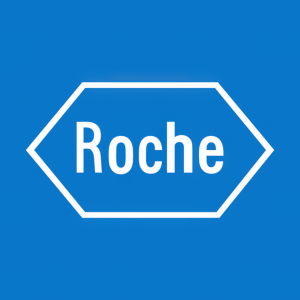New clinical and real-world data for Roche’s Vabysmo at ASRS reveal improved outcomes for people with two leading causes of vision loss
- Late-breaking post-hoc data indicate Vabysmo leads to less fibrosis, which may negatively impact vision, than aflibercept in people with diabetic macular edema (DME)
- Real-world data reinforce that first-line Vabysmo use improves outcomes and extends treatment intervals rapidly during the first four months for people with neovascular or ‘wet’ age-related macular degeneration (nAMD) and DME
- Clinical data reiterate Vabysmo’s positive anatomical outcomes, including reduced blood vessel leakage in the macula and greater and faster retinal fluid control
- Vabysmo is currently approved in over 70 countries to treat nAMD and DME, with more than one million doses distributed globally
Basel, 20 July - Roche (SIX: RO, ROG; OTCQX: RHHBY) announced today that data from its ophthalmology portfolio will be highlighted in 25 abstracts at the 2023 American Society of Retina Specialists (ASRS) Annual Meeting, which will be held from 28 July to 1 August in Seattle, United States. The data further advance the depth of clinical and real-world evidence supporting the use of Vabysmo® (faricimab), the first and only bispecific antibody for the eye, for the treatment of neovascular or ‘wet’ age-related macular degeneration (nAMD) and diabetic macular edema (DME).1-14
“The clinical and real-world data at ASRS reinforce the improvement in outcomes brought by Vabysmo in two leading causes of vision loss, particularly new analyses suggesting that Vabysmo is associated with less vision-impacting fibrosis than aflibercept,” said Levi Garraway, M.D., Ph.D., Roche’s Chief Medical Officer and Head of Global Product Development. “By improving disease control while offering a potentially less frequent treatment regimen, Vabysmo may help people spend less time managing their condition.”
Vabysmo is currently approved in over 70 countries to treat nAMD and DME, with public reimbursement in over 20 markets and more than one million doses distributed globally.15 Neovascular AMD and DME are two leading causes of vision loss worldwide, affecting more than 40 million people.16-19
The following key data will be presented at ASRS 2023:
Late-breaker: Vabysmo’s effect on epiretinal membrane (ERM) formation in DME compared to aflibercept
Two-year post-hoc data from the YOSEMITE and RHINE phase III studies will be presented for the first time on ERM formation in DME patients, indicating Vabysmo leads to less retinal fibrosis than aflibercept.3 ERMs are fibrotic tissues on the surface of the retina, which may negatively impact the anatomy of the eye and compromise vision.20
Vabysmo drying and durability data
Data will be presented reiterating positive anatomical outcomes previously seen with Vabysmo treatment, including reduced blood vessel leakage in the macula, and greater and faster retinal fluid control.4,6,7 Blood vessel leakage can cause a build-up of fluid and swelling in the back of the eye, contributing to sight loss.21,22
Data will also further support how increased intervals between doses of Vabysmo to treat nAMD and DME, compared to aflibercept, do not compromise outcomes.4,6,7
Vabysmo real-world data
Roche’s expanding programme of real-world studies for Vabysmo includes more than 8,500 participants in almost 30 countries.15
- Updates will be presented on real-world data from the FARETINA studies of Vabysmo in nAMD and DME looking at extended dosing intervals and impact on vision, including Vabysmo’s use as a first-line treatment.9,10
- Preliminary data on early outcomes and treatment patterns in the United Kingdom FARWIDE studies of Vabysmo in nAMD and DME will be shared for the first time.11,12
In addition, independent investigator studies of Vabysmo are expected to be presented. The TRUCKEE study, which focused on real-world outcomes in people with nAMD across 14 sites in the United States is scheduled for presentation on 31 July during the Wet AMD Symposium 3 (1:38 PM to 1:44 PM PDT).23
Further information on select Roche abstracts that will be presented at ASRS 2023 can be found in the table below.
| Topic | Abstract Title | Presentation Details |
| Vabysmo | An Assessment of the Impact of Disease Activity Criteria on Dosing Interval Assignment in Clinical Trial Patients With nAMD | Paper Presentation Session: Wet AMD Symposium 1 July 29, 2023 8:49 AM to 8:53 AM PDT |
| Elevatum Study Design and Rationale: A Phase 4 Trial of Faricimab (VABYSMO) in Underrepresented Patients With Diabetic Macular Edema | Paper Presentation Session: Diabetic Retinopathy Symposium 2 July 30, 2023 2:04 PM to 2:07 PM PDT | |
| Impact of Faricimab vs Aflibercept on Epiretinal Membrane Formation Over 2 Years in Eyes with DME in the YOSEMITE/RHINE Phase 3 Trials | Paper Presentation Session: Late Breaking Abstracts July 30, 2023 3:58 PM to 4:03 PM PDT | |
| Faricimab Reduces Macular Leakage vs Aflibercept in Patients With DME | Paper Presentation Session: Diabetic Retinopathy Symposium 3 July 31, 2023 10:53 AM to 10:57 AM PDT | |
| Faricimab Causes Rapid and Sustained Intraocular Suppression of Ang-2 and VEGF-A for Up to 16 Weeks in nAMD and DME | Paper Presentation Session: Diabetic Retinopathy Symposium 3 July 31, 2023 10:57 AM to 11:01 AM PDT | |
| Time to Retinal Fluid Control With Faricimab vs Aflibercept in Patients With DME in the Phase 3 YOSEMITE/RHINE Trials | Paper Presentation Session: Diabetic Retinopathy Symposium 3 July 31, 2023 11:01 AM to 11:05 AM PDT | |
| Faricimab Rapidly Improves Fluid Parameters in Patients With nAMD | Paper Presentation Session: Wet AMD Symposium 3 July 31, 2023 1:30 PM to 1:34 PM PDT | |
| Efficacy, Durability, and Safety of Faricimab in DME: 1-year Results from China Subpopulation of Phase 3 RHINE Trial | Virtual Paper on Demand Presentation | |
| Vabysmo Real-World Data | Early Treatment Patterns and Outcomes in Patients with Diabetic Macular Edema Treated with Faricimab: the FARETINA-DME Study | Paper Presentation Session: Diabetic Retinopathy Symposium 3 July 31, 2023 11:05 AM to 11:09 AM PDT |
| Early Treatment Patterns and Outcomes in Patients with Neovascular Age-Related Macular Degeneration Initiating Faricimab: the FARETINA-AMD Study | Paper Presentation Session: Wet AMD Symposium 3 July 31, 2023 1:34 PM to 1:38 PM PDT | |
| Real-world Use of Faricimab to Treat nAMD Patients in the UK | Virtual Paper on Demand Presentation | |
| Real-world Use of Faricimab to Treat DME Patients in the UK | Poster Presentation | |
| Susvimo | Port Delivery System With Ranibizumab (PDS) for Continuous Treatment in DME and DR: Additional Results From the Phase 3 Pagoda and Pavilion Trials | Paper Presentation Session: Late Breaking Abstracts August 1, 2023 10:53 AM to 10:59 AM PT |
| Anti-IL-6 (for Uveitic Macular Edema) | A Novel Intravitreal Anti-IL-6 Monoclonal Antibody for Uveitic Macular Edema (UME): Preliminary Results From the Phase 1 DOVETAIL Study | Paper Presentation Session: Inflammatory & Infectious Diseases Symposium July 29, 2023 4:04 PM to 4:10 PM PDT |
About neovascular age-related macular degeneration
Age-related macular degeneration (AMD) is a condition that affects the part of the eye that provides sharp, central vision needed for activities like reading.16 Neovascular or ‘wet’ AMD (nAMD) is an advanced form of the disease that can cause rapid and severe vision loss if left untreated.24,25 It develops when new and abnormal blood vessels grow uncontrolled under the macula, causing swelling, bleeding and/or fibrosis.24 Worldwide, around 20 million people are living with nAMD – the leading cause of vision loss in people over the age of 60 – and the condition will affect even more people around the world as the global population ages.16-18
About diabetic macular edema
Affecting around 21 million people globally, diabetic macular edema (DME) is a vision-threatening retinal condition associated with blindness and decreased quality of life when left untreated.19 DME occurs when damaged blood vessels leak into and cause swelling in the macula – the central area of the retina responsible for the sharp vision needed for reading and driving.21,26 The number of people with DME is expected to grow as the prevalence of diabetes increases.27
About the Vabysmo® (faricimab) clinical development programme
Roche has a robust phase III clinical development programme for Vabysmo® (faricimab). The programme includes AVONELLE-X, an extension study of TENAYA and LUCERNE evaluating the long-term safety and tolerability of Vabysmo in neovascular or ‘wet’ age-related macular degeneration (nAMD), and Rhone-X, an extension study of YOSEMITE and RHINE evaluating the long-term safety and tolerability of Vabysmo in diabetic macular edema (DME).28,29 In addition, Roche is investigating the efficacy and safety of Vabysmo in people with macular edema following retinal vein occlusion in two phase III studies, BALATON and COMINO.30,31 Roche has also initiated several phase IV studies, including the ELEVATUM study of Vabysmo in underrepresented patient populations with DME, the SALWEEN study of Vabysmo in a subpopulation of nAMD highly prevalent in Asia, as well as the VOYAGER study, a global real-world data collection platform.32-34 Roche also supports several other independent studies to further understand retinal conditions with a high unmet need.15
About Vabysmo® (faricimab)
Vabysmo® (faricimab) is the first bispecific antibody approved for the eye.13,14 It targets and inhibits two signalling pathways linked to a number of vision-threatening retinal conditions by neutralising angiopoietin-2 (Ang-2) and vascular endothelial growth factor-A (VEGF-A).35,36 Ang-2 and VEGF-A contribute to vision loss by destabilising blood vessels, causing new leaky blood vessels to form and increasing inflammation.35,36 By blocking pathways involving Ang-2 and VEGF-A, Vabysmo is designed to stabilise blood vessels. Vabysmo is approved in over 70 countries around the world, including the United States, Japan, the United Kingdom and in the European Union for people living with neovascular or ‘wet’ age-related macular degeneration and diabetic macular edema.13-15,37,38 Review by other regulatory authorities is ongoing.
About Roche in ophthalmology
Roche is focused on saving people’s eyesight from the leading causes of vision loss through pioneering therapies. Through our innovation in the scientific discovery of new potential drug targets, personalised healthcare, molecular engineering, biomarkers and continuous drug delivery, we strive to design the right therapies for the right patients.
We have the broadest retina pipeline in ophthalmology, which is led by science and informed by insights from people with eye diseases. Our pipeline includes gene therapies and treatments for geographic atrophy and other vision-threatening diseases, including rare and inherited conditions.
Applying our extensive experience, we have already brought breakthrough ophthalmic treatments to people living with vision loss. Susvimo™ (Port Delivery System with ranibizumab) 100 mg/mL for intravitreal use via ocular implant is the first U.S. Food and Drug Administration-approved refillable eye implant for neovascular or ‘wet’ age-related macular degeneration that continuously delivers a customised formulation of ranibizumab over a period of months.39 Vabysmo® (faricimab) is the first bispecific antibody approved for the eye, which targets and inhibits two signalling pathways linked to a number of vision-threatening retinal conditions by neutralising angiopoietin-2 (Ang-2) and vascular endothelial growth factor-A (VEGF-A).13,14,35,36 Lucentis®* (ranibizumab injection) is the first treatment approved to improve vision in people with certain retinal conditions.40
*Lucentis® (ranibizumab injection) was developed by Genentech, a member of the Roche Group. Genentech retains commercial rights in the United States and Novartis has exclusive commercial rights for the rest of the world.
About Roche
Founded in 1896 in Basel, Switzerland, as one of the first industrial manufacturers of branded medicines, Roche has grown into the world’s largest biotechnology company and the global leader in in-vitro diagnostics. The company pursues scientific excellence to discover and develop medicines and diagnostics for improving and saving the lives of people around the world. We are a pioneer in personalised healthcare and want to further transform how healthcare is delivered to have an even greater impact. To provide the best care for each person we partner with many stakeholders and combine our strengths in Diagnostics and Pharma with data insights from the clinical practice.
In recognising our endeavour to pursue a long-term perspective in all we do, Roche has been named one of the most sustainable companies in the pharmaceuticals industry by the Dow Jones Sustainability Indices for the thirteenth consecutive year. This distinction also reflects our efforts to improve access to healthcare together with local partners in every country we work.
Genentech, in the United States, is a wholly owned member of the Roche Group. Roche is the majority shareholder in Chugai Pharmaceutical, Japan.
For more information, please visit www.roche.com.
All trademarks used or mentioned in this release are protected by law.
References
[1] Zarbin M, et al. An assessment of the impact of disease activity criteria on dosing interval assignment in clinical trial patients with nAMD. Paper presentation at: American Society of Retina Specialists (ASRS) Annual Meeting; 28 July – 1 August 2023.
[2] Coney JM, et al. Elevatum study design and rationale: a phase IIII trial of faricimab (VABYSMO) in underrepresented patients with diabetic macular edema. Paper presentation at: ASRS Annual Meeting; 28 July – 1 August 2023.
[3] Jaffe GJ, et al. Impact of faricimab vs aflibercept on epiretinal membrane formation over two years in eyes with DME in the YOSEMITE/RHINE phase III trials. Paper presentation at: ASRS Annual Meeting; 28 July – 1 August 2023.
[4] Nudleman E, et al. Faricimab reduces macular leakage vs aflibercept in patients with DME. Paper presentation at: ASRS Annual Meeting; 28 July – 1 August 2023.
[5] Muni RH, et al. Faricimab causes rapid and sustained intraocular suppression of Ang-2 and VEGF-A for up to 16 weeks in nAMD and DME. Paper presentation at: ASRS Annual Meeting; 28 July – 1 August 2023.
[6] Rachitskaya AV, et al. Time to retinal fluid control with faricimab vs aflibercept in patients with DME in the phase III YOSEMITE/RHINE trials. Paper presentation at: ASRS Annual Meeting; 28 July – 1 August 2023.
[7] London NJ, et al. Faricimab rapidly improves fluid parameters in patients with nAMD. Paper presentation at: ASRS Annual Meeting; 28 July – 1 August 2023.
[8] Sun X, et al. Efficacy, durability, and safety of faricimab in DME: one-year results from China subpopulation of phase III RHINE trial. Virtual Paper on Demand Presentation at: ASRS Annual Meeting; 28 July – 1 August 2023.
[9] Borkar D, et al. Early treatment patterns and outcomes in patients with diabetic macular edema treated with faricimab: the FARETINA-DME study. Paper presentation at: ASRS Annual Meeting; 28 July – 1 August 2023.
[10] Leng T, et al. Early treatment patterns and outcomes in patients with neovascular age-related macular degeneration initiating faricimab: the FARETINA-AMD study. Paper presentation at: ASRS Annual Meeting; 28 July – 1 August 2023.
[11] Patel PJ, et al. Real-world use of faricimab to treat nAMD patients in the UK. Virtual Paper on Demand Presentation at: ASRS Annual Meeting; 28 July – 1 August 2023.
[12] Gale RP, et al. Real-world use of faricimab to treat DME patients in the UK. Poster Presentation at: ASRS Annual Meeting; 28 July – 1 August 2023.
[13] United States Food and Drug Administration (U.S. FDA). Highlights of prescribing information, Vabysmo. 2022 [Internet; cited July 2023]. Available from: https://www.accessdata.fda.gov/drugsatfda_docs/label/2022/761235s000lbl.pdf.
[14] Medicines and Healthcare products Regulatory Agency. MHRA approves faricimab through international work-sharing initiative [Internet; cited July 2023]. Available from: https://www.gov.uk/government/news/mhra-approves-faricimab-through-international-work-sharing-initiative.
[15] Roche data on file.
[16] Bright Focus Foundation. AMD: Facts and figures [Internet; cited July 2023]. Available from: https://www.brightfocus.org/macular/article/age-related-macular-facts-figures.
[17] Connolly E, et al. Prevalence of AMD-associated genetic risk factors and four-year progression data in the Irish population. Br J Ophthalmol. 2018;102:1691–5.
[18] Wong WL, et al. Global prevalence of AMD and disease burden projection for 2020 and 2040: a systematic review and meta-analysis. Lancet Glob Health. 2014;2:106–16.
[19] Yau JWY, et al. Global prevalence and major risk factors of diabetic retinopathy. Diabetes Care. 2012;35:556–64.
[20] Moorfields Eye Hospital NHS Foundation Trust. Epiretinal membrane [Internet; cited July 2023]. Available from: https://www.moorfields.nhs.uk/condition/epiretinal-membrane#:~:text=An%20epiretinal%20membrane%20is%20a,cause%20problems%20with%20central%20vision.
[21] All About Vision. Macula lutea [Internet; cited July 2023]. Available from: https://www.allaboutvision.com/resources/macula.
[22] Kaiser PK, et al. Retinal fluid and thickness as measures of disease activity in neovascular age-related macular degeneration. Retina. 2021;41:1579-86.
[23] Chang EY, et al. Real-world efficacy and safety of faricimab in neovascular age-related macular degeneration: the TRUCKEE study. Paper presentation at: ASRS Annual Meeting; 28 July – 1 August 2023 Presentation.
[24] Pennington KL, DeAngelis MM. Epidemiology of AMD: associations with cardiovascular disease phenotypes and lipid factors. Eye and Vision. 2016;3:34.
[25] Little K, et al. Myofibroblasts in macular fibrosis secondary to nAMD - the potential sources and molecular cues for their recruitment and activation. EBioMedicine. 2018;38:283-91.
[26] National Eye Institute. Diabetic retinopathy [Internet; cited July 2023]. Available from: https://www.nei.nih.gov/learn-about-eye-health/eye-conditions-and-diseases/diabetic-retinopathy.
[27] Liu E, et al. DME: clinical risk factors and emerging genetic influences. Clin Exp Optom. 2017;100:569–76.
[28] Clinical Trials.gov. A study to evaluate the long-term safety and tolerability of Vabysmo in participants with nAMD (AVONELLE-X) [Internet; cited July 2023]. Available from: https://clinicaltrials.gov/ct2/show/NCT04777201.
[29] Clinical Trials.gov. A study to evaluate the long-term safety and tolerability of Vabysmo in participants with DME (Rhone-X) [Internet; cited July 2023]. Available from: https://clinicaltrials.gov/ct2/show/NCT04432831.
[30] Clinical Trials.gov. A study to evaluate the efficacy and safety of faricimab in participants with macular edema secondary to branch retinal vein occlusion (BALATON) [Internet; cited July 2023]. Available from: https://clinicaltrials.gov/ct2/show/NCT04740905.
[31] Clinical Trials.gov. A study to evaluate the efficacy and safety of faricimab in participants with macular edema secondary to central retinal or hemiretinal vein occlusion (COMINO) [Internet; cited July 2023]. Available from: https://clinicaltrials.gov/ct2/show/NCT04740931.
[32] Clinical Trials.gov. A study to investigate faricimab treatment response in treatment-naïve, underrepresented patients with DME (ELEVATUM) [Internet; cited July 2023]. Available from: https://clinicaltrials.gov/ct2/show/NCT05224102.
[33] APVRS. Design and rationale of the SALWEEN trial: a phase IIIb/IIII study of faricimab, a dual angiopoietin-2 and vascular endothelial growth factor-A inhibitor, in patients with polypoidal choroidal vasculopathy [Internet; cited July 2023]. Available from: https://2022.apvrs.org/abstract/?code=200351.
[34] Clinical Trials.gov. A real-world study to gain clinical insights into Roche ophthalmology products (VOYAGER) [Internet; cited July 2023]. Available from: https://clinicaltrials.gov/ct2/show/NCT05476926.
[35] Heier JS, et al. Efficacy, durability, and safety of intravitreal faricimab up to every 16 weeks for nAMD (TENAYA and LUCERNE): two randomised, double-masked, phase III, non-inferiority trials. The Lancet. 2022; 399:729-40.
[36] Wykoff C, et al. Efficacy, durability and safety of intravitreal faricimab with extended dosing up to every 16 weeks in patients with DME (YOSEMITE and RHINE): two randomised, double-masked, phase III trials. The Lancet. 2022; 399:741-55.
[37] Chugai Pharmaceutical Co. Ltd. Chugai obtains regulatory approval for Vabysmo, the first bispecific antibody in ophthalmology, for nAMD and DME [Internet; cited July 2023]. Available from: https://www.chugai-pharm.co.jp/english/news/detail/20220328160002_909.html.
[38] European Medicines Agency. Summary of Product Characteristics, Vabysmo, 2022 [Internet; cited July 2023]. Available from: https://www.ema.europa.eu/en/documents/product-information/vabysmo-epar-product-information_en.pdf.
[39] U.S. FDA. Highlights of prescribing information, Susvimo. 2006 [Internet; cited July 2023]. Available from: https://www.accessdata.fda.gov/drugsatfda_docs/label/2021/761197s000lbl.pdf.
[40] U.S. FDA. Highlights of prescribing information, Lucentis. 2006 [Internet; cited July 2023]. Available from: https://www.accessdata.fda.gov/drugsatfda_docs/label/2017/125156s114lbl.pdf.
Roche Group Media Relations
Phone: +41 61 688 8888 / e-mail: media.relations@roche.com
| Hans Trees, PhD Phone: +41 79 407 72 58 | Nathalie Altermatt Phone: +41 79 771 05 25 |
| Karsten Kleine Phone: +41 79 461 86 83 | Nina Mählitz Phone: +41 79 327 54 74 |
| Kirti Pandey Phone: +49 172 6367262 | Sileia Urech Phone: +41 79 935 81 48 |
Roche Investor Relations
| Dr. Bruno Eschli Phone: +41 61 68-75284 e-mail: bruno.eschli@roche.com | Dr. Sabine Borngräber Phone: +41 61 68-88027 e-mail: sabine.borngraeber@roche.com |
| Dr. Birgit Masjost Phone: +41 61 68-84814 e-mail: birgit.masjost@roche.com | Dr. Gerard Tobin Phone: +41 61 68-72942 e-mail: gerard.tobin@roche.com |
Investor Relations North America
| Loren Kalm Phone: +1 650 225 3217 e-mail: kalm.loren@gene.com |
Attachment







